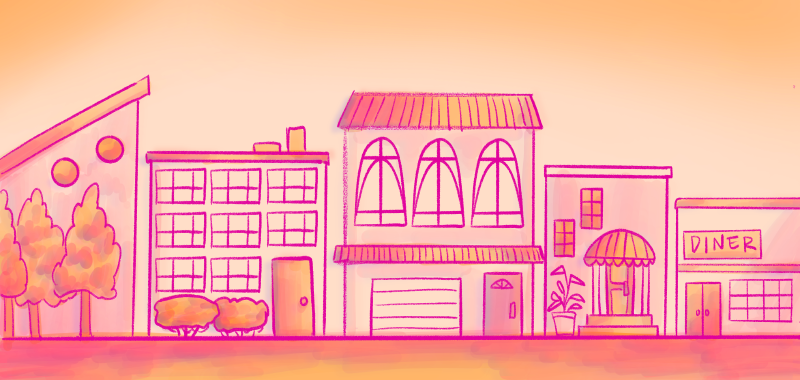
Spring Is for Action
Denise “The Vamp DeVille” Zubizarreta, Creative Team Member
March 31, 2023
Spring is when we all come back to life after our long winter hibernation state and it’s just in time to help us recover from the daylight savings shift that nearly made it nearly impossible to defrost ourselves. It’s a time when art starts to feel sweeter and the colors engulf us in happiness and allergies. Spring also comes with the not-so-popular municipal elections which are often under-hyped in states all across the country. There’s a reason our elections take such a long break from November to April and it isn’t because of the temperature changes.
The Denver Post even noted Denver’s tradition of holding its elections in the spring is at least a century old, probably older, according to Lucille Wenegieme, a strategic advisor for Denver Clerk and Recorder Paul López. So old, in fact, that the Denver Clerk’s office no longer has documentation on hand to pinpoint its birthday but the logic behind its inception seems to have to do with the November elections and differentiating between partisan and nonpartisan electorates.
[State and federal elections held in the fall are partisan but Denver’s municipal elections are nonpartisan. In order to ease confusion for voters Denver, like many other cities, has separate voting dates to allow voters to focus on local issues instead of party politics.]
For many of us, voting has become a much larger topic in the last couple decades as we’ve seen drastic changes in youth voting initiatives, art covering the topic and party politics talking points, which have ranged from climate change to all out lunacy. Springing into action this year to make our voices heard in Denver means voting for a new Mayor and this year, the options are fierce as seventeen candidates are on the ballot this time around (final votes come in on April 4th).
The Denver mayor is tasked with overseeing roughly 13,000 municipal workers; they also appoint hundreds of municipal leaders including the head of the airport (which is in the middle of a massive new renovation project which includes a considerable shift to the art that visitors and locals alike will experience). The mayor will set a multibillion-dollar budget, exercise veto power over City Council decisions, oversee and enforce contracts but also ensure potholes are filled, streets are swept and cops aren’t using excessive force while attempting to manage crime. It’s a powerful position and even if you’re sitting at home dealing with political fatigue from all the news clips all over the internet, this vote not only has an impact on Denver but also on Colorado’s economy as well.
Downtown is still suffering from the effects of the pandemic, office buildings are still empty (though I think a lot of people are happy to be remote now), restaurants have shuttered, an already raging opioid crisis has worsened, and homelessness, housing affordability, public safety and crime are all at the top of the concerns list for Denverites. This means that whatever candidate takes the vote has got a lot of work ahead of them, starting promptly on day one since they’ll inherit everything we just talked about above plus, massive expansions of downtown and Cherry Creek, arts education and funding, unionization and dissatisfaction among city workers and a plethora of other issues like our public transportation system which needs some serious work (and hopefully will pay someone better in the near future to take on the role).
Why am I bringing all this up in an art blog, well, I’m glad you asked! Different-Level.com describes the relationship between art and politics as, “Multifaceted.”
“Art can contribute to political discourse by supporting the current political and ideological views. However, more often than not, art is a disruptive form that serves as a tool for changing existing political and social realities. Art can address certain political issues or reinterpret different social structures (for example, it can reveal different power balances in the society, offering alternative understandings of certain events, etc.)”
Artists can cause political change single-handedly by making the invisible - visible and by drawing attention to underrepresented political issues. I’m sure that the artists of Denver are already discussing the needs of the community while simultaneously preparing themselves for projects that take on these issues creatively, though they may still be left unresolved with a new mayor at the helm.
Springing into action this Spring isn’t just about voting, or planning out what will be in your backyard boxes this year. It’s also about being vocal in our work and how we as artists choose to share that. If you’ve also been taken over by the winter woes that have led me to hibernate quite effectively, it’s time to shake off the cobwebs, grab a brush, digital pencil, clay or whatever medium calls to you and start to get the blood flowing. The city is about to change and we’re not just talking about the strategically planted flowers that will be blooming. How will the artists of Denver take on the new world around them this season? Will they be motivated by politics or pleasure - maybe they’ll be motivated by both!
We don’t know yet who the new mayor will be but there is no doubt that the community they will serve will remain vocal, unapologetic and vehemently passionate about sharing their concerns - in written form, on a call, through protests and even in the murals that surround them.